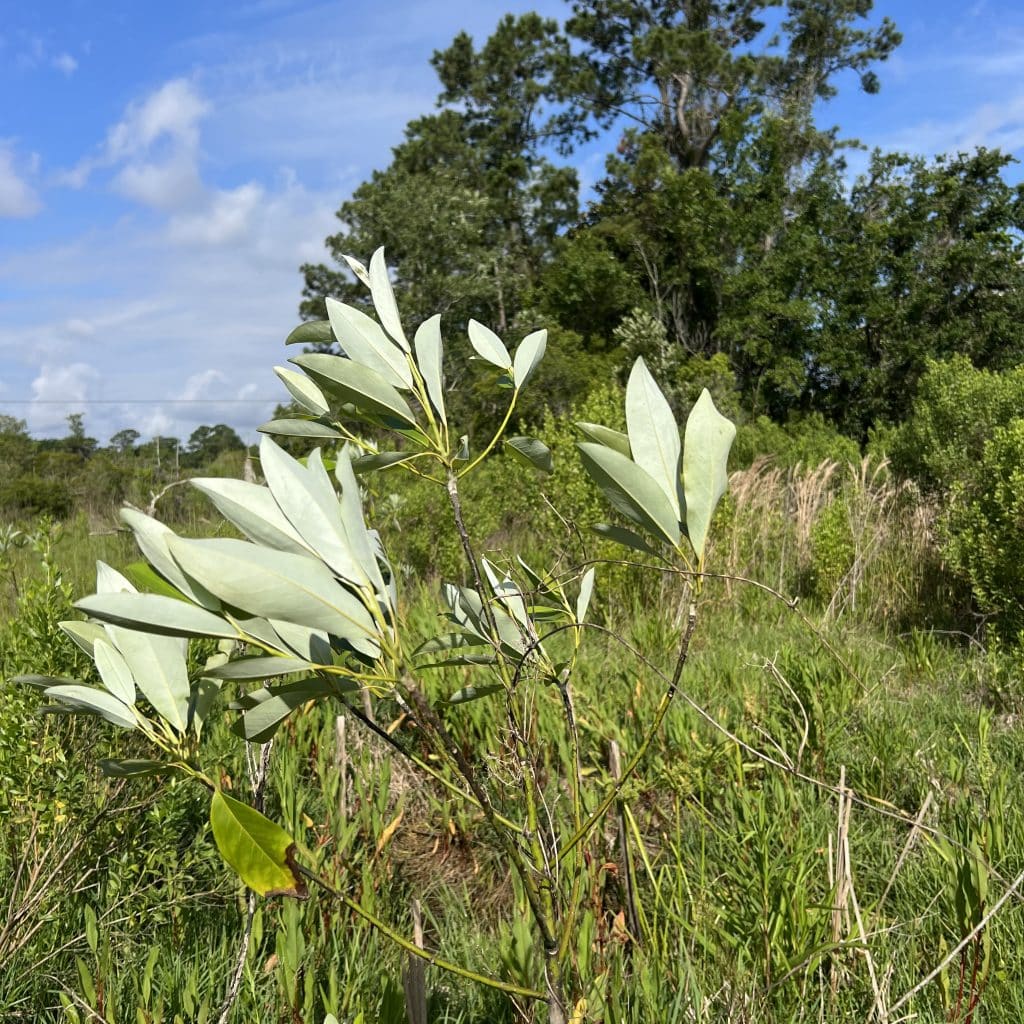For me, Sweetbay Magnolia is the unsung hero among magnolias of the Gulf and Atlantic coastal regions. Smaller than its showier Southern Magnolia relative, the species is nonetheless a prominent feature of our landscape. It gives Bayhead Swamps their name and, along with Southern Magnolia, are the more common among all seven species of magnolias.
Like its larger relative, Sweetbay Magnolia (Sweetbay) is evergreen, while all other magnolias are deciduous. And although smaller, its creamy white blossoms are fragrant and, once pollinated, produce cones with bright red seeds contrasted against the green foliage. What makes Sweetbay different, and noticeable, is the silver-white pubescence (fine hairs) on the underside of younger leaves.
This feature makes identification easy enough, but also makes this tree stand out along the roadsides when the wind blows. Suddenly, Sweetbay becomes the defining plant of wet pine flatwoods and Bayhead Swamps. This feature also gives this plant an expanding place in our urban landscapes.
Classified as a facultative wetland plant, Sweetbay is at home in wet soils, but can also grow in dryer soil conditions. Its smaller overall size and more vertical habit (less horizontal spread than Southern Magnolia) has given it a place in parking lots and other green spaces, like the interstate welcome center in neighboring Louisiana. It can tolerate the smaller growing areas in these spaces and is also attractive as a multi-stemmed plant.
Sweetbay’s prominence as an evergreen plant, along with silver-white leaves that can be seen at a distance, is likely what led to the name Bayhead Swamps where it is a dominant element of the canopy. Anyone that navigates across natural or urban landscapes has little trouble spotting these wetlands because of Sweetbays. Slash Pine is also a dominant tree in Bayhead Swamps, but do not present the contrast that Sweetbay does.

Besides being a common tree in wetlands, Sweetbay supports a variety of animals in these habitats. Its flowers are pollinated largely by small beetles that relish the copious amount of pollen that also make blossoms attractive. Sweetbay is a host plant of Eastern Tiger, Southern Tiger, and Spicebush Swallowtail butterflies. It is also the sole host plant for Sweetbay Silkmoth, one of the larger moths of the region. Birds, squirrels, and other small mammals relish the ripened seeds.
For us, fresh leaves can be used as seasonings, much like bay leaves – a close relative. But for me, this species is an underutilized attractive plant worthy of our artificial landscapes. As a native species, Sweetbay is adapted to a wide range of soil types and wet to dry conditions. As such, it requires little maintenance, and even if it does become too large, is easily pruned to a smaller and manageable size.
Sweetbay may not be as prominent as Southern Magnolia, but because it is less so, is more adaptable to many opportunities in our landscapes. But for me, its natural place in our world is where it stands out the best and is the “Belle” of its world.
Hope to see you in our great outdoors!